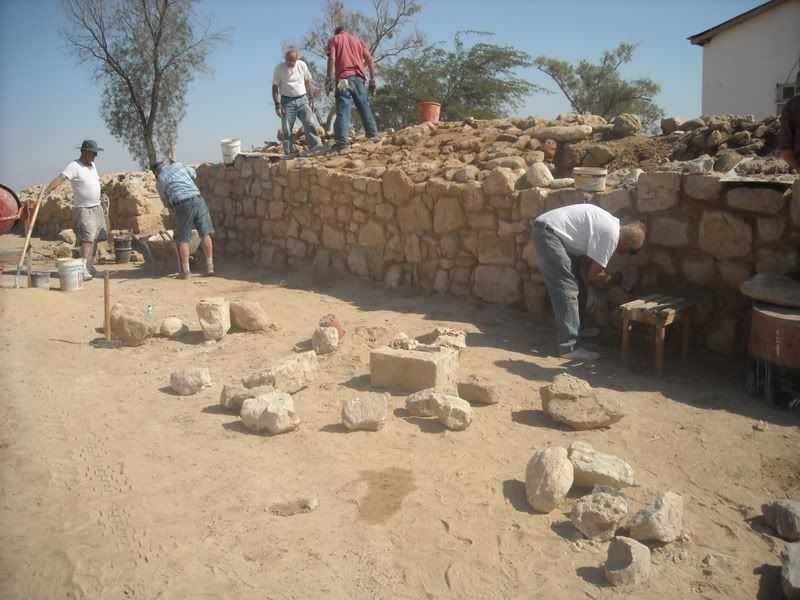Resurrecting Ancient Tamar
Archaeological excavation is by nature a process of planned, systematic destruction, and although it carefully records the material context of what it uncovers, the space it touches is never the same. But we can attempt to do the best we can to place some things back in order based on what we have learned about a site. That is where restoration and preservation come in, involving the actual reconstruction of what the ravages of time and human hand have put asunder. At a site known as Tamar in the southern desert of Israel, a team of professionals and volunteers are doing just that -- resurrecting what remains of an ancient city that, at one time, bore great commercial significance for the ancient kingdoms that successively or cooperatively controlled the critical trade routes of the southern Levant.
The Site
Throughout antiquity, the lucrative Arabian spice trade was carried on the backs of camels, traveling thousands of miles across trackless desert to reach the major ports and cities of the Mediterranean. All along this long road, local kings and faraway emperors eagerly set up stopping points for the caravans, making sure that they too got their share of the goods and profits.
The ancient city of Tamar in southern Israel was one of these sites. Already by the tenth century B.C., Solomon had established Tamar as a fortified town to control the trade routes coming from Arabia. Subsequent kings of both Judah and Edom, including Josiah, occupied the site in order to oversee the passing caravan trade. The Edomites even maintained a cultic shrine at Tamar, as evidenced by several distinctive Edomite incense altars found in a pit at the site. By the latter half of the first millennium B.C., the great Nabatean merchants of Petra had also established a commercial outpost here, an outpost that was then occupied by the Romans in the second century A.D.
The Project
Do you want to be a part of literally reconstructing the past? If so, go to www.blossomingrose.org to find out more. It might open a whole new chapter of learning and experience in your life.
Labels: archaeological restoration, blossoming rose, Tamar




0 Comments:
Post a Comment
<< Home